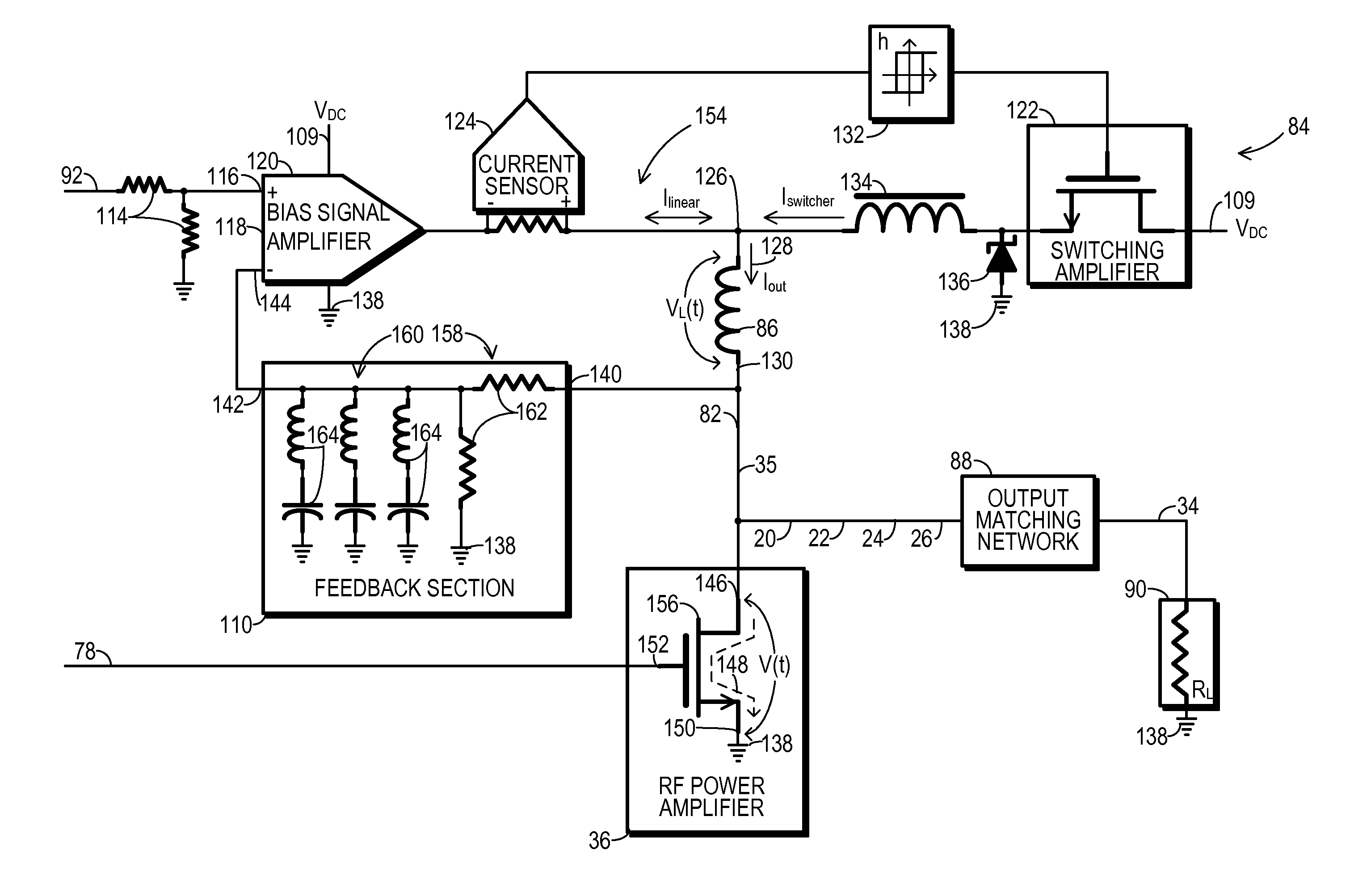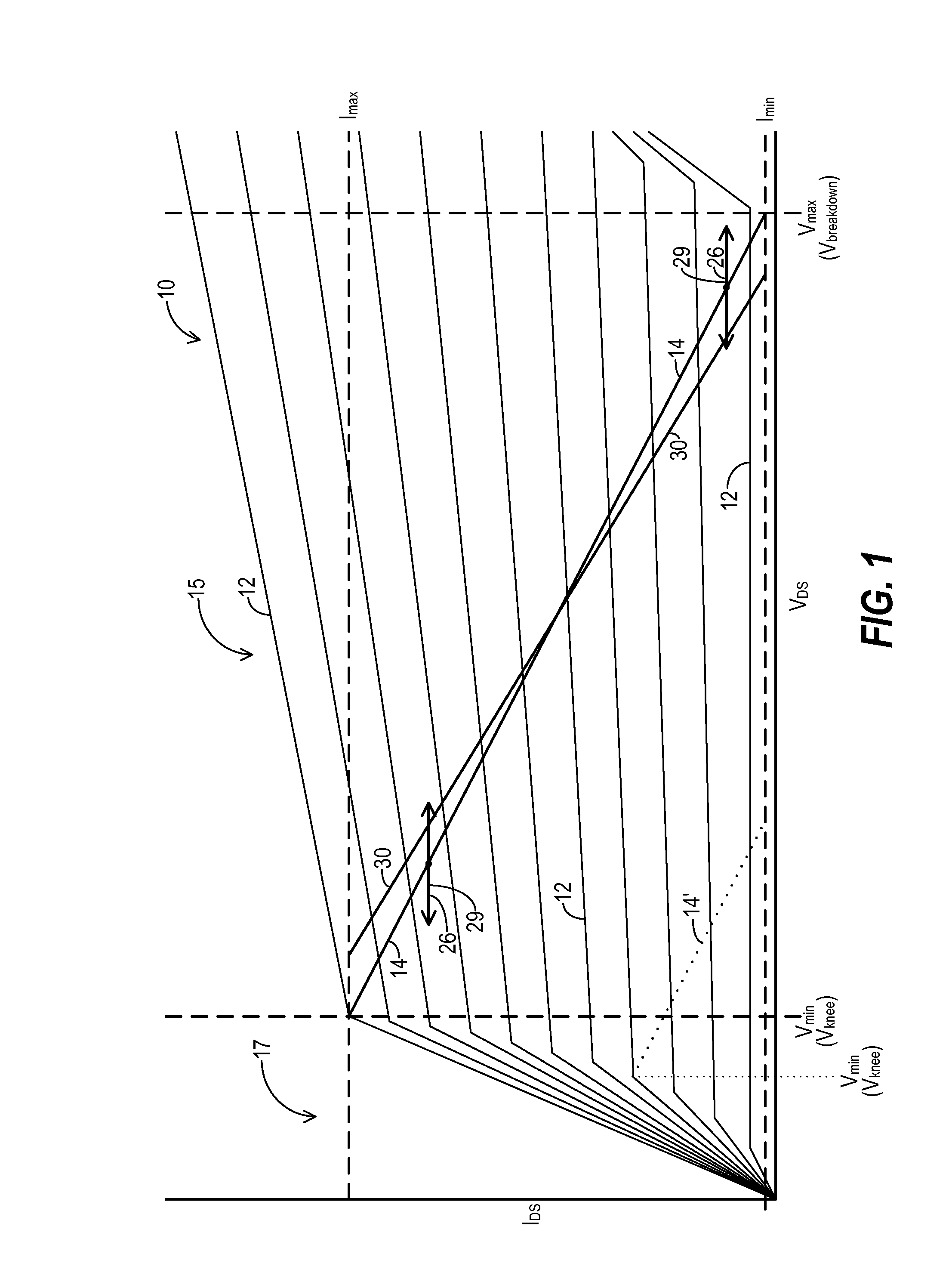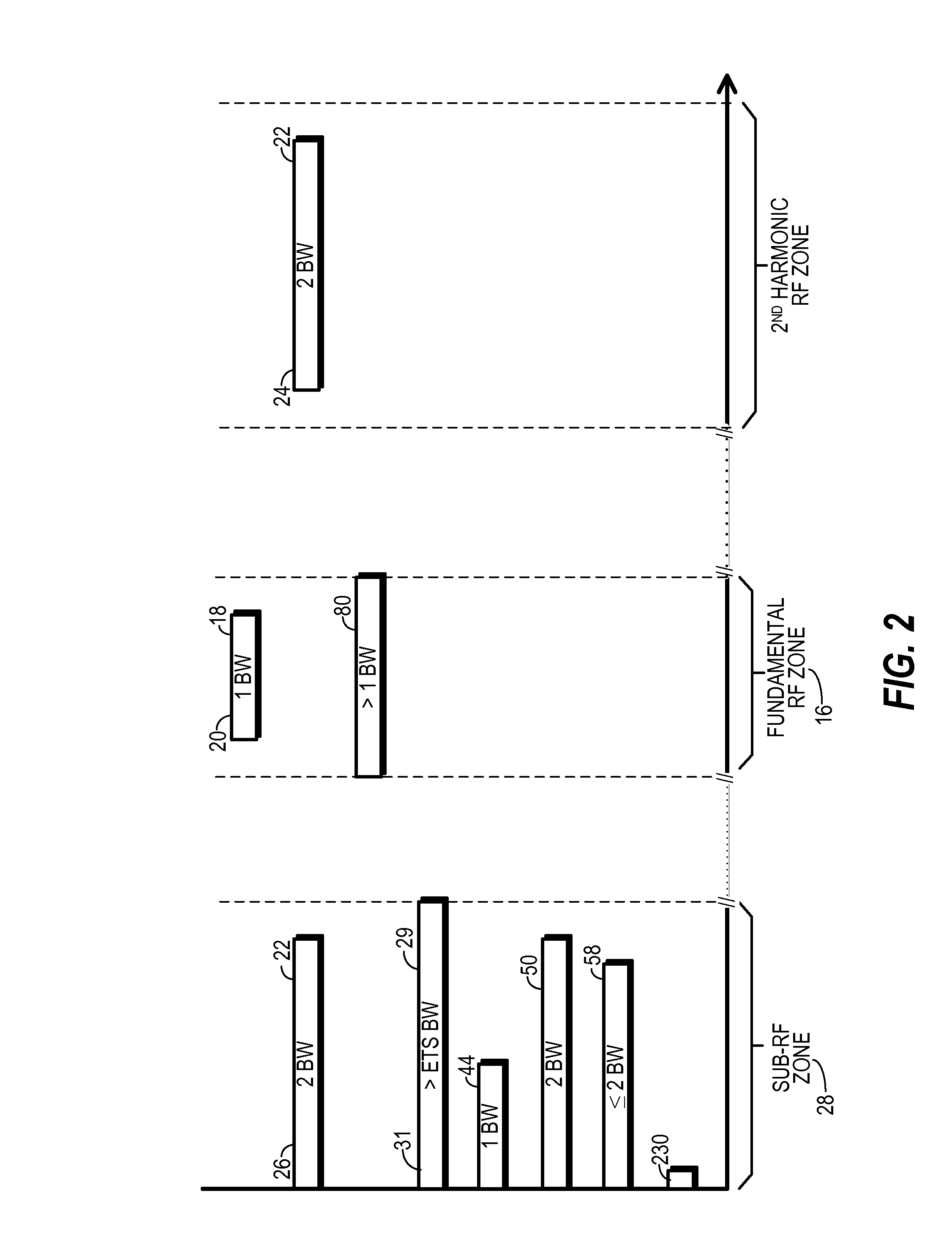Transmitter and method with RF power amplifier having predistorted bias
a technology of rf power amplifier and predistorted bias, which is applied in the direction of differential amplifier, amplifier with semiconductor device/discharge tube, amplifier details, etc., can solve the problems of transmitters that violate regulatory requirements, all linear rf power amplifiers fail to meet, distortion and spectral regrowth,
- Summary
- Abstract
- Description
- Claims
- Application Information
AI Technical Summary
Benefits of technology
Problems solved by technology
Method used
Image
Examples
Embodiment Construction
[0022]FIG. 1 shows a chart depicting a representative family 10 of transfer curves 12 for a representative RF amplifying device (not shown) using field effect transistor (FET) nomenclature. The basic relationships shown in FIG. 1 apply to other types of RF amplifying devices as well. Current IDS flowing through a conduction channel of the RF amplifying device between its drain and source conduction nodes is represented along the vertical axis, and voltage VDS across the drain and source conduction nodes is represented along the horizontal axis. A different transfer curve 12 is presented for each of several different levels for an input signal VGS presented to the RF amplifying device across gate and source nodes.
[0023]An optimal load line 14 extends between the knee voltage (Vknee) for VDS at a high level of input signal VGS, and the breakdown voltage (Vbreakdown) for VDS at a lower level of the input signal VGS. Optimal load line 14 is defined by amplifier characteristics in combin...
PUM
 Login to View More
Login to View More Abstract
Description
Claims
Application Information
 Login to View More
Login to View More - Generate Ideas
- Intellectual Property
- Life Sciences
- Materials
- Tech Scout
- Unparalleled Data Quality
- Higher Quality Content
- 60% Fewer Hallucinations
Browse by: Latest US Patents, China's latest patents, Technical Efficacy Thesaurus, Application Domain, Technology Topic, Popular Technical Reports.
© 2025 PatSnap. All rights reserved.Legal|Privacy policy|Modern Slavery Act Transparency Statement|Sitemap|About US| Contact US: help@patsnap.com



